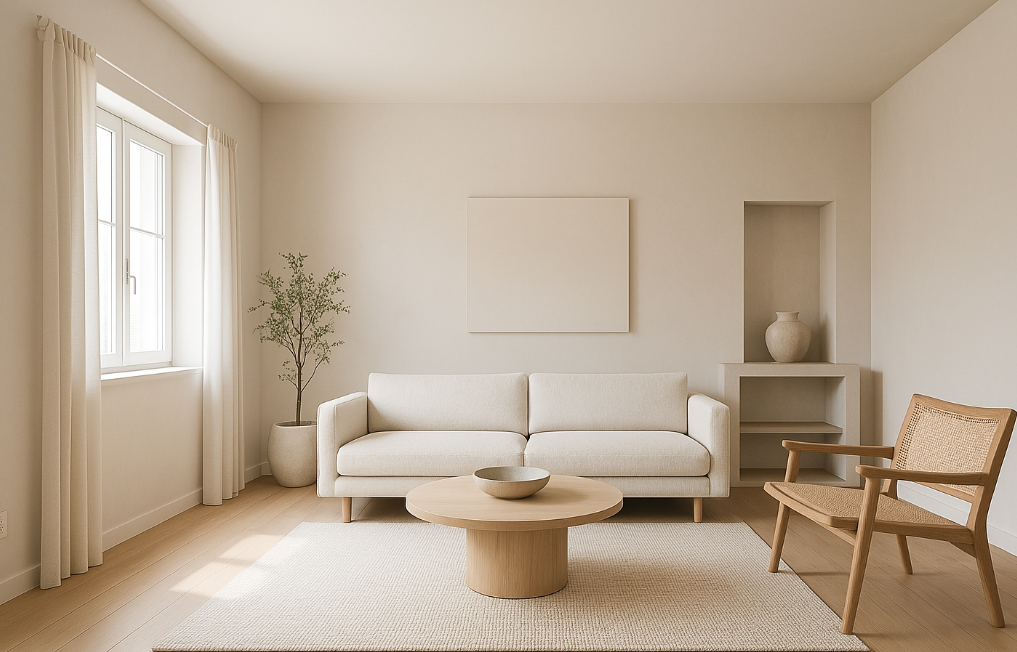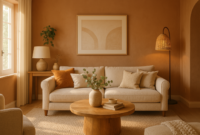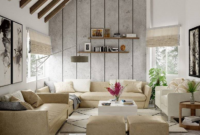Minimalist Home Interior Design: Simple But Elegant
In a world constantly clamoring for more—more color, more furniture, more décor—the minimalist home interior design movement offers a refreshing counterpoint. Rooted in the idea that less is indeed more, minimalist design revolves around stripping back the unnecessary to allow the essential to shine. It’s not about empty spaces or sterile environments but rather about intentional simplicity that exudes both calm and sophistication.
Minimalism, at its heart, is a lifestyle choice, and its expression through interior design carries this philosophy into the spaces we inhabit. The result? Homes that are functional, peaceful, and aesthetically timeless.
A Brief History of Minimalist Design
Minimalist design finds its roots in various global art and architectural movements. The Japanese Zen philosophy, which emphasizes simplicity and the beauty of imperfection, laid the groundwork. In the West, the Bauhaus movement and modernist architecture of the 20th century brought minimalism into the mainstream. By the mid-1900s, architects like Ludwig Mies van der Rohe championed the now-famous phrase: “Less is more.”
Over the years, minimalism evolved from an avant-garde idea to a celebrated design ethos embraced by homeowners, designers, and creatives worldwide. Today, minimalist interior design is often associated with Scandinavian design principles, which balance simplicity with warmth and functionality.
The Core Principles of Minimalist Interior Design
Before diving into how to create a minimalist home, it’s important to understand the principles that guide the style:
1. Function Over Form
Every piece in a minimalist space must serve a purpose. Decorative items are not chosen for mere ornamentation but for their ability to complement the function and aesthetic of the space.
2. Simplicity in Structure and Form
Clean lines, geometric shapes, and uncluttered layouts define minimalist interiors. The focus is on structure, with furniture and decor that feature straight edges and smooth curves.
3. Neutral and Muted Color Palette
Whites, beiges, greys, and soft earth tones dominate minimalist spaces. These colors enhance the natural light in the room and create a calming atmosphere.
4. Decluttered Spaces
Minimalist design shuns clutter. Surfaces are kept clean, and storage is integrated to keep personal belongings out of sight but easily accessible.
5. Quality Over Quantity
Rather than filling a space with many items, minimalism encourages investing in fewer, high-quality pieces that are timeless and well-made.
Designing a Minimalist Living Room
The living room is often the central hub of the home and a perfect place to begin a minimalist transformation.
Start with a Blank Canvas
Begin by clearing the space. Strip it of unnecessary furniture, décor, and clutter. What remains should be only the essentials: a seating area, a surface for drinks or books, and appropriate lighting.
Choose a Soft Color Scheme
Neutral colors make the room feel open and airy. Opt for white or off-white walls, paired with pale wood flooring or a light rug. Add soft-toned textiles like linen curtains or wool throws for texture without overwhelming the eye.
Furniture Selection
Go for sleek, low-profile furniture. A simple sofa with clean lines, a mid-century-style coffee table, and a statement armchair are enough to define the space. Every item should have room to breathe.

Add Thoughtful Accents
Decorate sparingly. A single large artwork, a few well-placed books, or a ceramic vase can make a statement without adding clutter. Let negative space speak—it creates balance and allows focal points to shine.
Minimalist Kitchen and Dining Area
In the kitchen, functionality is key. Embrace hidden storage solutions to keep countertops free from clutter. Use handle-less cabinetry for a seamless look and opt for integrated appliances. Stainless steel, wood, and matte finishes work well in minimalist kitchens.
Dining areas benefit from simplicity too. A long, wooden table paired with matching chairs creates a cohesive and grounded space. Accent the area with a pendant light and a small centerpiece like a succulent or a simple candle arrangement.
The Minimalist Bedroom
A minimalist bedroom should feel like a sanctuary—serene and uncluttered. Start with the bed as the focal point, preferably with a simple frame and natural textiles like cotton or linen bedding.
Keep side tables minimal and free of clutter. Choose lighting that is both functional and stylish, like a modern wall sconce or a slim floor lamp. Wardrobes should be built-in where possible to reduce visual clutter.
As with other rooms, stick to a neutral color scheme. You can add visual warmth with wooden finishes or soft-textured throws and pillows.
Minimalist Bathroom Essentials
Bathrooms in minimalist homes often feel like spa retreats. Use stone, wood, and ceramic for an organic, earthy vibe. Floating vanities, frameless mirrors, and walk-in showers with clear glass partitions add to the streamlined look.
Keep toiletries neatly stored. Use matching containers or a hidden cabinet to reduce visual noise. Consider heated towel rails or underfloor heating for added luxury without visual bulk.
Incorporating Nature and Light
Natural elements are a vital part of minimalist design. Large windows that let in plenty of natural light help blur the lines between indoor and outdoor spaces. Use plants strategically—rather than overfilling the room, one or two statement plants can introduce life and color without chaos.
Daylight is complemented with warm, ambient lighting. Think soft LED lights, strategically placed lamps, and dimmer switches to create mood and comfort.
Minimalism Doesn’t Mean Boring
One of the biggest misconceptions about minimalist design is that it’s bland or lifeless. In truth, minimalism allows your personality and lifestyle to shine through with clarity. By removing distractions, you give prominence to what truly matters.
Personal touches like a framed photograph, a well-loved book, or a handcrafted object can be displayed as centerpieces rather than getting lost in a sea of décor. When every item has a story or purpose, the space feels more meaningful.
Sustainability and Minimalism
Minimalist design also naturally aligns with sustainable living. By focusing on quality and longevity, it encourages mindful consumption. Instead of constantly updating furniture or following fleeting trends, minimalist homeowners invest in pieces that last.
Repurposing old furniture, choosing sustainable materials like bamboo or reclaimed wood, and buying secondhand are all ways to bring an eco-conscious angle to minimalist design.
Creating Emotional Space
Perhaps the most underrated aspect of minimalist design is the emotional clarity it brings. Physical clutter often mirrors mental clutter. A well-organized, minimal space can promote focus, reduce stress, and support a more mindful daily routine.
Many who adopt minimalism report sleeping better, feeling calmer, and being more productive. It’s not just about aesthetics—it’s a lifestyle that nurtures wellbeing.
Minimalist Design for Small Spaces
Contrary to what some believe, minimalism works exceptionally well in small apartments and homes. By maximizing natural light, using space-saving furniture, and eliminating excess, even tiny rooms can feel spacious and luxurious.
Murphy beds, floating desks, and wall-mounted storage solutions help keep the floor space open. Mirrors and glass surfaces further enhance the sense of space.
Final Thoughts
Minimalist home interior design is more than a trend—it’s a timeless philosophy that champions clarity, calm, and intentional living. Whether you’re redesigning a single room or an entire house, the principles of minimalism can help you create an environment that feels elegant, welcoming, and deeply personal.
As our lives become increasingly fast-paced and digital, the desire for tranquil, grounded spaces grows stronger. Through minimalist design, we can reconnect with what truly matters—beauty, function, and peace.
Simple, yet elegant. Minimal, yet meaningful.


